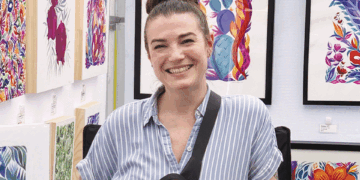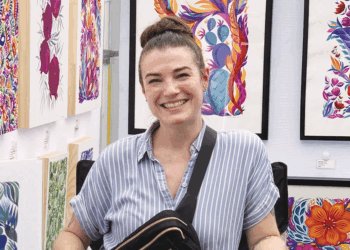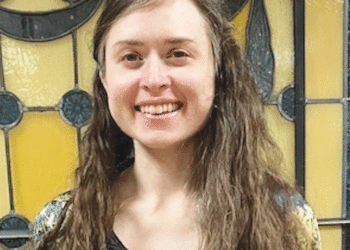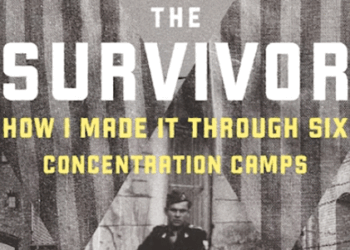Campaign chairs see firsthand community dollars at work
By TED FLAUM
Like the flora and fauna that have returned to Mount St. Helens 30 years after its catastrophic eruption, new life is emerging for the Jewish community of Hungary. The devastation of the Holocaust — which saw 85 percent of Hungarian Jewry killed, followed by decades of repression under Communist rule — resulted in the once-flourishing Hungarian Jewish community being decimated.
Now, the estimated 100,000-member Jewish community of Hungary is showing signs of renewed hope and rebirth thanks to the support of the Jewish Federations of North America, including that of our United Jewish Fund and Council of St. Paul.
Phil Goldman and Marsha Schoenkin, UJFC’s 2011 Men’s and Women’s Campaign Chairs, and I joined more than 120 other chairs and directors of Jewish federations from across the United States and Canada on a whirlwind, seven-day fact-finding mission to Hungary and Israel to see firsthand how our UJFC dollars are making a vital difference.
Part I: Hungary
In Hungary, we had the opportunity to tour the old Jewish quarter and visit the Dohany Street Synagogue — the second largest synagogue in the world — which is able to accommodate more than 3,000 worshipers and whose elaborate interior consists of beautiful wood work, gold leaf ornaments, decorative ceilings and stained glass windows.
On its outside wall is a memorial plaque dedicated to Hannah Senesh, a Hungarian Jew who immigrated to Palestine and returned to occupied Hungary to fight the Nazis during WWII — only to be captured, tortured and executed by them. She penned the famous poem “Eli, Eli.”
In the synagogue’s courtyard is a mass grave of 7,000 unidentified Jews who were brutally killed during the Nazis’ occupation of Hungary. Next to the synagogue is the Raoul Wallenberg Memorial Park. We visited other sites that testify to the deep connection that Jews had with the country as well as the tragedies they had encountered due to anti-Semitism and war during its 700-year history.
Besides learning about the community’s past, we also visited various Jewish agencies that are restoring the vitality of this community thanks to the dollars raised in our community. The Balint Jewish Community Center in Budapest, which is supported by the American Jewish Joint Distribution Committee, a UJFC beneficiary agency, offers many similar programs that one would find at most JCCs in the United States — clubs, courses and cultural programs for the city’s Jewish community who account for 80 percent of the country’s Jewish population.
We were treated to a demonstration by youngsters who had been studying the Israeli martial art of Krav Maga. The instructor explained that Krav Maga builds self-esteem in these children who are often the victims of verbal, and sometimes physical, abuse, especially if they are easily identified as being Jewish by donning a kippa or wearing payot. Xenophobia and anti-Semitism are growing concerns of the Roma and Jewish populations, especially with the results of recent elections, which saw Hungary’s extreme right-wing party win 17 percent of the vote.
Flaum, Schoenkin and Goldman stopped at Camp Szarvas in Hungary.
We visited Camp Szarvas, a Jewish summer camp located two and a half hours outside of Budapest. It serves as many as 2,000 Jewish youth each summer from all over central Europe. For many, this exceptional camp is their first introduction to their Jewish identity — some not even knowing that they are Jewish until they arrive at the camp and then getting confirmation from their parents when they call home, “Oh yes, we forgot to tell you, you’re Jewish.”
One former camper who we met was Andras Feheravi. He attended the camp’s inaugural session 18 years ago and is now a unit head at the camp.
“I didn’t know anything about being Jewish,” he said. “I became a counselor because I felt that my previous years as a camper had changed my life. I want to give to the kids what I got from this place.”
This summer, however, only 1,000 children will be able to attend Szarvas as economic conditions have forced the camp to reduce the number of camp sessions it normally offers from four to two.
The hope for a revitalized Hungarian Jewish community was underscored by the plans to open the first Israeli Cultural Institute in the world this fall. The institute, which is supported by the Jewish Agency for Israel, a UJFC beneficiary agency, will build stronger ties between the Hungarian Jewish community and the State of Israel by promoting cultural and educational programs.
Participants shared information about a unique intergenerational program that pairs a young adult with a Holocaust survivor in order for them to build a relationship and to learn from each other. For many survivors, it is the first time they are sharing their experience with another person. For the younger generation, they are learning about their past. The pair then visits Israel together to share the experience of the country.
An estimated 10,000 Holocaust survivors have never been to Israel and this program will allow many of them to visit before they are unable to do so.
Part II: Israel
In Israel, we visited programs that are supported by the funds raised by the UJFC. We met with individuals and families who are benefiting from those programs and services, which address a host of social and cultural issues.
We spoke with olim (immigrants) from Ethiopia, the former Soviet Union, the United States and Hungary. We met with at-risk youth who are in programs that teach them entrepreneurial skills so they can start their own businesses, and with deaf Bedouin women who are being helped to integrate into Israeli society and to become self-sufficient. We had dinner with members of the Israel Defense Forces, many of whom participate in the Lone Soldiers program, which offers support to new immigrants who join the IDF but have no family in the country.
We also learned about critical issues facing the country. Experts from various fields addressed topics such as Israel’s image in the world and in the United States, the blockade of Gaza, the Israeli economy and Iran’s nuclear threat.
Community and national leaders such as former refuznik and Knesset member Natan Sharansky, now head of the Jewish Agency for Israel; Israeli President Shimon Peres; and government spokesperson Mark Regev addressed our group regarding the controversial conversion bill — to which they are all opposed — and developing stronger Israel-Diaspora relations.
After the mission was officially over, Phil, Marsha and I spent two full days visiting St. Paul’s Partnership 2000 region in the Tiberias area. Besides meeting with the P2K staff and several volunteers, we were led on a tour by Jacob Farbstein, general director of Poriya Hospital, who showed us the new emergency room facilities that are being built. In preparation for possible chemical and biological attacks, these facilities are being equipped with sophisticated air filtration systems and pre-admittance showers. Unfortunately, the threat of such deadly attacks weighs heavily on Israeli minds.
We were driven to a border crossing between Israel and Jordan, near an area that is referred to as the “Island of Peace,” where each morning Israelis from a local kibbutz are allowed to cross and work in an orchard that used to belong to the kibbutz. The land is now located on the Jordanian side of the border and the kibbutz leases it from Jordan.
It is also near the site where seven eighth-grade Israeli girls were killed during a field trip by a Jordanian soldier in 1997. A park has been created in their memory with seven small hills, each one with the name of one of the victims on it and covered with flowers. While there we saw a woman who has made it her personal undertaking to remember these girls by tending daily to the flowers on the hills.
We also were driven from the pre-1967 border with Syria, which overlooked the entire Kinneret region, to the current Israeli-Syrian border, a distance that seemed shorter than traveling from St. Paul to St. Louis Park. Throughout the drive, we saw remnants of bunkers that used to house Syrian soldiers. This gave us a profound sense how small the country is — we were on the border with Syria and only a few hours away from Tel Aviv, by car.
Flaum, Schoenkin and Goldman visited the offices of St. Paul’s Partnership 2000 Region in the Tiberias area.
We returned to St. Paul with a greater appreciation and awareness of our connection to Jews —whether they live in Hungary, Israel or in our own community — and how the UJFC helps us strengthen those bonds that unite us as a Jewish people. Soon we will offer opportunities for members of the St. Paul Jewish community to hear about our inspirational trip. Please look for information from UJFC or call the UJFC office at 651-690-1707 to arrange a personal presentation of our experiences to you or your group.
***
Ted Flaum is campaign director at the United Jewish Fund and Council of St. Paul.




















